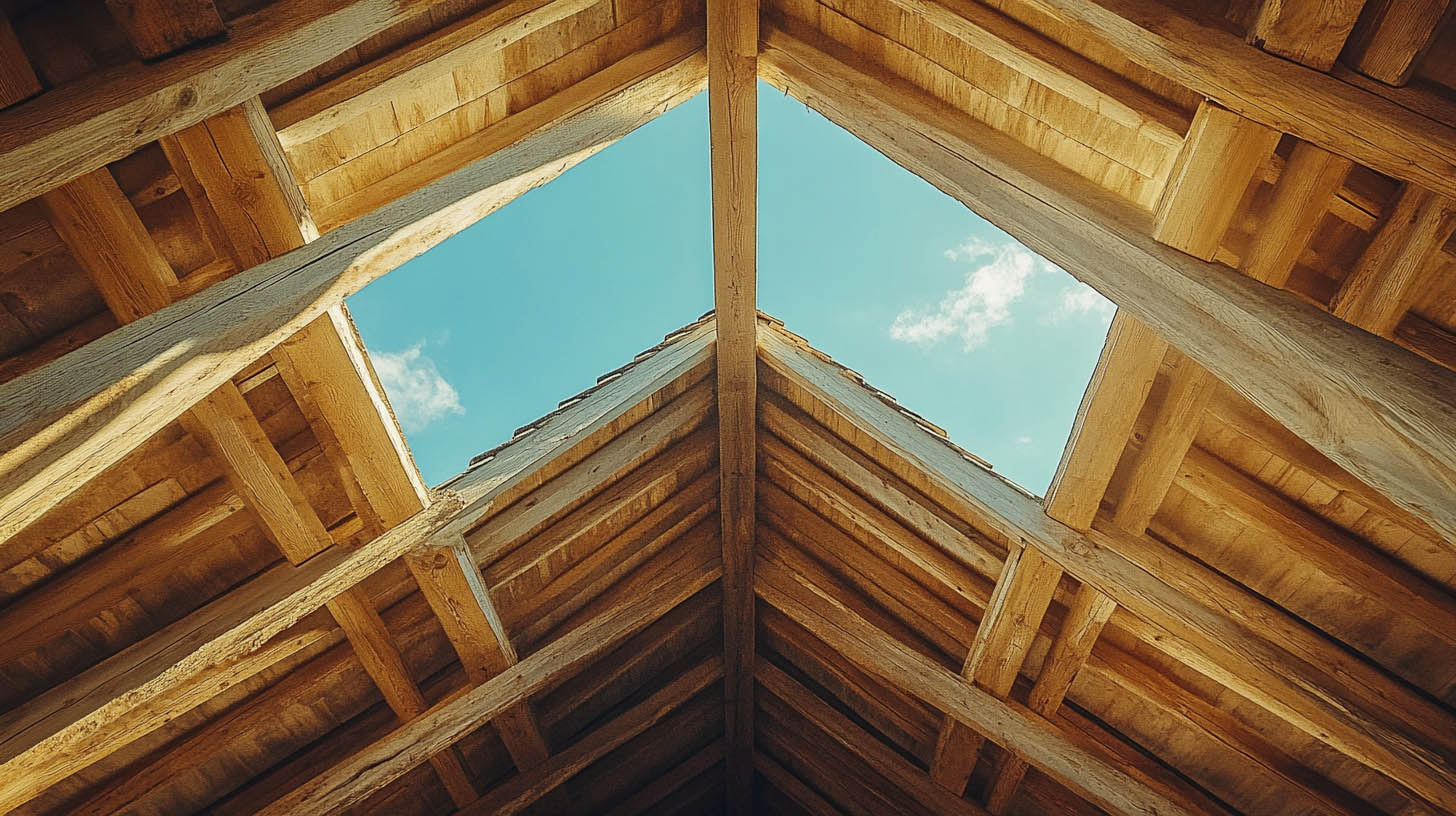
Blog
How Roof Structure Support Affects Durability
When considering a long-lasting roof, understanding the importance of its underlying structure is essential. The roof structure, which supports the entire roofing system, plays a significant role in determining how well your roof stands the test of time. At Avenue Roofing, Jacksonville’s leading roofing experts, we always emphasize the importance of a solid roofing foundation to ensure both durability and safety.

What Is Roof Structure Support?
Roof structure support is the framework beneath the roof’s visible surface, responsible for holding up the roofing material and distributing its weight across the building. This structure includes several components like rafters, beams, and trusses, all working together to create a stable foundation for the roof. Depending on the architecture and material choice, the complexity and strength of this structure vary.
In Florida, roofing structures are typically made of wood due to its affordability, ease of production, and strength. The climate, architectural style, and type of roofing material used all influence the structure’s durability. For instance, homes with asphalt shingles require less structural support compared to those with heavier materials like slate or clay tiles.
Key Components of Roof Structure
Rafters and Beams
Rafters are diagonal wooden beams that form the basic framework of a roof. They provide the primary support for the roof’s surface and are responsible for shaping its slope. Fun Fact: Rafters have been used since ancient times to form steep-pitched roofs, dating back to Roman architecture.
The support system also includes beams that are either horizontal (like ridge boards) or vertical (like struts), all contributing to the distribution of weight and structural integrity. Ridge boards, placed at the peak of the roof, hold the rafters together, ensuring the roof’s cohesive structure.
Collar Beams and Ceiling Joists
Collar beams are horizontal beams that connect two rafters near the ridge. They add rigidity to the roof structure by preventing the rafters from sagging. Ceiling joists, positioned lower than collar beams, serve as a support system for the roof from below, especially for load-bearing walls.
Fascia and Top Plate
Fascia boards run along the lower edge of the roof, covering the ends of the rafters and supporting the bottom row of roof tiles. The top plate, on the other hand, connects rafters to the wall studs, ensuring the load from the roof is distributed across the building’s foundation.
Interesting Fact: The earliest known use of fascia boards can be traced back to ancient Egyptian architecture, where they were used to conceal wooden beams.
How Roof Structure Affects Durability
The structural components of a roof are not just there to hold the covering in place. The durability of your roof relies heavily on how well these elements are constructed and maintained. A properly designed and built roof structure distributes weight evenly, preventing sagging, warping, and collapse under heavy loads like snow or debris from storms. In contrast, a poorly supported roof can experience premature failure, leading to costly repairs or even complete replacement.
Florida’s weather, especially the heavy rainfall and strong winds common during hurricane season, puts immense pressure on roof structures. Homes with inadequate support may suffer significant damage, especially if the roofing material used is heavy.
Ventilation and Flashing
While roof structure forms the foundation, additional elements like ventilation and flashing enhance durability. Proper ventilation ensures air circulates throughout the roof, reducing heat buildup, which can shorten a roof’s lifespan. Flashing, made from metal, prevents water from seeping into vulnerable areas like chimneys and roof joints.
Sheathing and Roof Covering
Once the roof structure is complete, sheathing (or decking) is installed. This layer provides a base for roofing materials like shingles. In Florida, the most common material is asphalt shingles, known for their lightweight nature. However, heavier materials like clay or metal may require additional reinforcement.
Challenges in Roof Structure Support
The main challenge homeowners face when it comes to roof structure is identifying potential issues before they escalate. Regular inspections can reveal problems such as sagging rafters, rotting beams, or inadequate ventilation. Many roofing contractors, including Avenue Roofing, offer maintenance services to ensure your roof remains in top condition for years to come.
If you suspect issues with your roof or want expert advice on roof support structures, Avenue Roofing is just a click away. You can learn more about how we approach roof installations and repairs by visiting our blog.
FAQs
1. What is the most important part of a roof’s structure?
The rafters and beams are crucial as they form the primary support framework for the roof, ensuring its stability.
2. How does Florida’s weather affect roof structure durability?
Florida’s strong winds and heavy rains put pressure on the roof, so it’s vital to have a strong structure, especially if using heavier materials.
3. How can I tell if my roof structure needs repairs?
Signs include sagging rafters, water stains on ceilings, and uneven roofing surfaces. Regular inspections can help catch problems early.
4. What materials are commonly used for roof structures?
In Florida, wood is the most common material due to its strength and affordability.
5. How often should I have my roof inspected?
It’s recommended to inspect your roof annually, especially after severe weather, to identify potential issues before they worsen.
Conclusion
A well-constructed roof structure is essential to ensuring your roof’s durability, especially in areas like Florida where extreme weather conditions are common. Understanding how each component, from rafters to flashing, contributes to the overall strength of the roof can help homeowners make informed decisions when it comes to roof maintenance and repairs.
We at Avenue Roofing prioritize the long-term durability of your roof by ensuring that every component is designed and installed with precision.
To learn how chimney damage affects your roof and how to fix it, click here.



